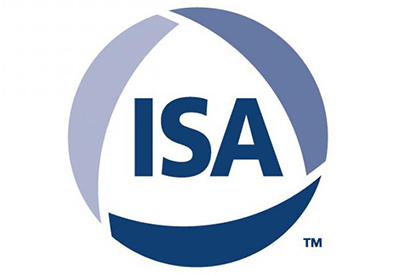Wholesale Trade, March 2022

May 16, 2022
Wholesale sales rise slightly
Wholesale sales rose 0.3% in March to $79.8 billion, with the largest increases coming in the building material and supplies and the motor vehicle and motor vehicle accessories and parts subsectors. This was the seventh increase in the past eight months. Sales rose in four of seven subsectors, representing 64% of the total wholesale sector.
Constant dollar sales fell 0.6%.
Building material and supplies sales lead gains
Sales of building material and supplies rose 3.8% in March to $14.1 billion, the fifth increase in the past six months. The gains in the subsector reflect ongoing strength in the housing industry in the United States. Housing starts in the United States rose 0.3% in March to their highest level in more than five years (US Census Bureau Report), providing a boost to Canadian exports of forestry products and building and packaging materials, which together rose 2.9% in March.
Motor vehicle and motor vehicle accessory and parts sales grew 2.6% in March, the first increase after two months of declines. Both imports (+9.9%) and exports (+7.9%) in the motor vehicle sector grew in March. Notwithstanding the small increase, automobile manufacturers across North America are not working at full capacity, with sporadic shutdowns having been required at a number of facilities across the continent in March. These sporadic shutdowns continued into April as semiconductor chip supplies have not yet returned to pre-COVID-19 pandemic levels.
Partially offsetting the increases was a 4.0% decline in sales of machinery, equipment and supplies, which was the largest movement (higher or lower) of any wholesale subsector in March. This was the first decline after six consecutive increases in the subsector. Lower sales came mostly from the computer and communications equipment and supplies industry, which fell 8.6% after reaching a historic high in February.
Overall, sales in the wholesale sector rose 3.9% in the first quarter of 2022 to $239.3 billion. Nearly half of the growth in the sector came from a 21.3% jump in sales from the lumber, millwork, hardware and other building supplies industry, as demand for housing and lumber prices both remained at high levels. Six of the seven subsectors reported gains in the first quarter of 2022, with the only decline coming in the motor vehicle and motor vehicle accessories and parts subsector, where sales fell 3.1% due to ongoing supply chain issues.
Ontario leads provincial gains
Six provinces reported higher wholesale sales in March, accounting for 64% of national sales, led by Ontario.
Sales in Ontario rose 1.5% to $40.4 billion in March, with higher sales in five of the seven subsectors. The miscellaneous subsector led the gains with a 7.4% increase to $5.3 billion. Sales in all component industries rose, with almost half of the growth coming from the recyclable material industry, up 24.4% to $0.9 billion. Higher sales in the personal and household goods and the motor vehicle and motor vehicles parts and accessories subsectors also contributed to higher sales in Ontario. Motor vehicle and motor vehicle parts and accessories sales were up 3.2% to $8.1 billion, while sales of personal and household goods grew 3.3% to $6.4 billion. The gains of these two subsectors were offset by lower sales in the machinery, equipment and supplies subsector, which fell 5.4% to $8.3 billion. Excluding this subsector, sales in Ontario would have been up 3.4%.
With most provinces and territories having relatively tempered monthly movements, the next largest change was a downward movement in Saskatchewan. In the province, following six consecutive months of growth, sales decreased 9.0% to $3.3 billion. While five of seven subsectors had lower sales, over three-quarters of the decline was due to a 12.1% fall in the miscellaneous subsector, which accounted for 58% of the province’s sales.
In the first quarter of 2022, nine provinces and one territory had higher sales than in the fourth quarter of 2021. Together, they represented 98% of national quarterly sales. While contributing to almost 11% of the quarterly national sales, leading the gains was British Columbia. In the province, sales reached $25.0 billion, an 11.6% increase compared with the fourth quarter of 2021. This increase was largely on the strength of the building material and supply subsector. Quarterly wholesale sales increased 1.7% to $120.6 billion in Ontario, 4.5% to $45.4 billion in Quebec, and 6.0% to $25.2 billion in Alberta. Together with British Columbia, these four provinces accounted for 90% of national sales.
Inventories increase in March
Inventories rose 0.4% to $108.7 billion in March, the second consecutive monthly increase. Four of seven subsectors reported increased inventories, representing 42.3% of the total value.
Inventories in the personal and household goods subsector increased by 5.6% in March. Inventories grew in all component industries in the subsector, with textile, clothing, and footwear merchant wholesalers and pharmaceuticals, toiletries, cosmetics and sundries merchant wholesalers reporting the most growth. Also contributing to the increase were higher inventories in the miscellaneous subsector, which grew 2.2% to $15.4 billion, and the food, beverage and tobacco merchant subsector, which grew 2.8% to $11.6 billion.
Overall, inventory growth in March was partially offset by decreases of machinery, equipment and supplies merchant wholesalers, the motor vehicle and motor vehicle parts and accessories merchant wholesalers, and the building material and supplies merchant wholesalers.
Wholesale inventories increased by 1.1% in the first quarter of 2022. This increase was led by quarterly growth in stocks of machinery, equipment and supplies merchant wholesalers, up 2.1%, and the miscellaneous merchant wholesalers, which grew 3.4%. Inventory growth in the first quarter of 2022 was mainly mitigated by the motor vehicle and motor vehicle parts and accessories merchant wholesalers, which shrank by 6.7%.
The inventory-to-sales ratio stayed at 1.36 in March. This ratio is a measure of the time (in months) required to exhaust inventories if sales were to remain at their levels.











